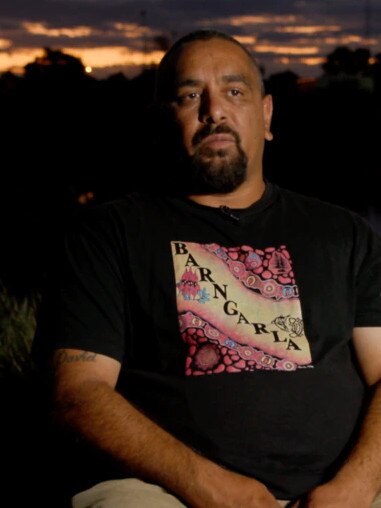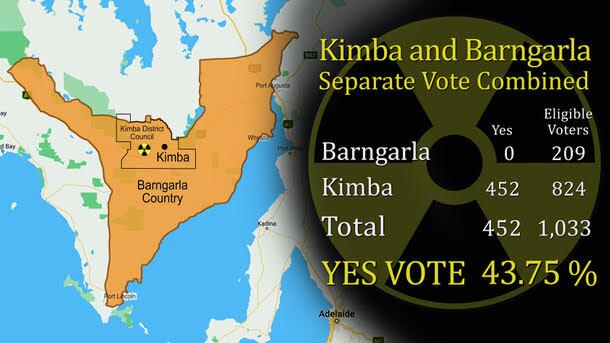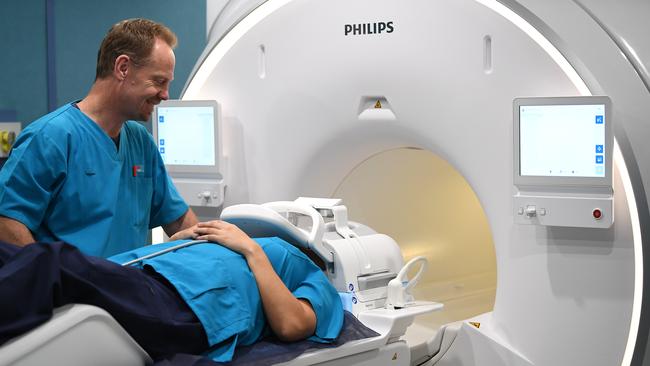Barngarla people say their votes weren’t counted in Kimba nuclear dump census
As SA awaits confirmation on a location of a national nuclear waste dump near Kimba, traditional owners say they weren’t included in a vote on the contentious project.
Port Lincoln
Don't miss out on the headlines from Port Lincoln. Followed categories will be added to My News.
A First Nations people say their voice wasn't heard in the proposal to create a permanent, national nuclear waste storage facility, despite a census of the nearest township.
The plan cleared a major hurdle in June, with a shortlist of sites passing the Senate on June 21.
Federal Resources Minister Keith Pitt expected to name Napandee farm, near Kimba on the Eyre Peninsula as the likely choice in the coming weeks.

The debate about the facility centres on a 2019 census by the Australian Electoral Commission, which found more than 60 per cent of Kimba residents were in favour of the facility.
However, the body for the local Indigenous community, the Barngarla Determination Aboriginal Corporation said their voices on the proposal were not heard.
Group chair Jason Bilney said the Kimba ballot did not account for the First Nations people, who have a significant stake in the land, and in the Dreaming stories associated with it.
“The simple fact remains that even though the Barngarla hold native title land closer to the proposed facility than the town of Kimba, the First Peoples’ for the area were not allowed to vote,” he said.
“It’s a cop out to say we weren’t on the electoral roll, we had to do a separate vote, but how do we guarantee our votes are combined,” he said.
The bill allowing construction of the facility only passed the senate last month, after a clause was introduced which allows judicial review for those opposed to any decision.
“They tried to take the umpire out in the fourth quarter, so we’re glad to have had that amendment included, it‘s a win for democracy,” Mr Bilney said.

Federal Liberal Member for Grey Rowan Ramsey said the economic opportunities the facility will bring to the region and believes the consultation process was sufficient.
“It would've been impossible to run a vote to include the Barngarla people as it was based on people who live and work in Kimba and none of them actually live in the district,” he said.
“Importantly, at Napandee, the site that was selected, 100 per cent of the direct neighbours, those that share boundaries with the host property, support the facility.
“The property is under freehold title, which totally extinguishes native title and as far as I’m aware there’s no one claiming Barngarla descent living in Kimba.”
In June last year in parliament, Mr Ramsey said those who discuss the issue outside of the town are often ill informed.
“There are those who sit outside Kimba and think that they‘ve made the wrong decision, they don’t know, they’re only farmers and they’re not smart enough to work it out.
“I can tell you that it offends me. That attitude offends me. This is a decision for the people of Kimba, and they have made it.”
“Like virtually every other non-coastal farming community in Australia, our population is in decline, the facility is a fantastic opportunity for the region with 45 full time jobs many of which can be filled by locals.”
Radioisotopes from nuclear medicine, like technetium-99, used to treat thousands of Australians each year is stored at more than 100 locations around the country, including the Lucas Heights reactor in Sydney.

For decades the federal government has said a specialised radioactive waste facility is needed with the Australian Nuclear Science and Technology Organisation’s Lucas Heights facility will set to reach capacity in 2026.
Mr Bilney said if a proper heritage assessment and consultation with the Barngarla people had occurred, the dialogue could have been less combative.
“It’s about being open and transparent, it should have been put to us and all South Australians affected, what about all the towns who will now have nuclear waste trucked through, where was their say,” he said.
“If we’d been consulted and a part of the process from the beginning, it could have been a different story.
“A lot of our people remember the impacts up in Maralinga, my grandfather was from up there and we remember some of the impacts and cancers that came about in the years after.
“They didn't have a right back then, so we’re fighting for our say now.”
South Australia has a chequered nuclear history, with long term effects of radiation at the Maralinga bomb site and dumping at the Arkaroola mine in the Flinders Ranges marring public confidence in anything nuclear.





